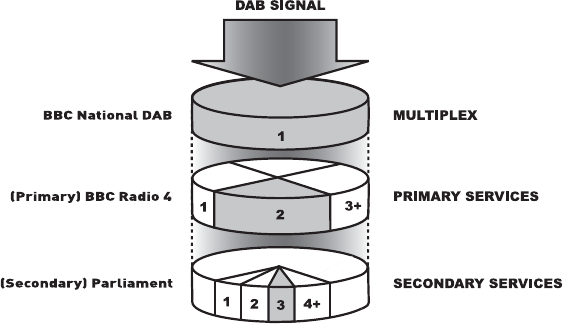
14
Guide to digital radio
Your EVOKE-1 Elgar enables you to receive and listen to DAB radio programmes. Digital Audio Broadcast (DAB) uses digital signals rather than
traditional analogue signals enabling near CD-quality audio with virtually interference-free reception. DAB also enables broadcasters to transmit
additional data along with the audio including other audio channels, text and in the future, perhaps computer data and images.
Digital radio is broadcast as groups of data called ensembles or multiplexes. Each multiplex can contain a number of stations (services) and
each station contains a primary service and can contain secondary services as illustrated in the following diagram.
Each multiplex is transmitted in a set frequency range and
received by your EVOKE-1 Elgar for decoding. Your EVOKE-1
Elgar enables you to receive multiplexes broadcast in
frequency band III (174-240 MHz) and store the services in
each multiplex for you to access. The number of multiplexes
you receive will vary depending on your location. Band III
is divided into 41 channels identified as 5A to 13F.
Each
channel can contain one multiplex. Channels allocated to the
UK are in the range 11B to 12D.
Multiplexes and stations have labels (names) which are used
to identify them. Instead of needing to know a particular
frequency to listen to your favourite broadcast you can simply
select the station name. Secondary services and additional
data such as text containing programme or multiplex
information are also easily accessed using your EVOKE-1
Elgar.


















